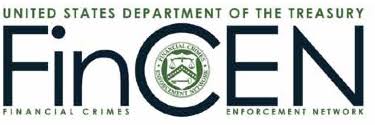FinCEN Issues Human Trafficking Advisory (Part II of II)

Elizabeth Slim, Senior Consultant at The Volkov Law Group, joins us for part II of her postings on the problem of human trafficking and recent guidance issued by FinCEN. Elizabeth can be reached at [email protected].
Human traffickers, like all criminals, rely on the international financial system to facilitate their crimes and to disguise proceeds from their illegal activities. Traffickers open bank accounts to deposit and launder illicit funds; purchase airfare, train tickets, and bus rides to transport victims; book hotel rooms; and use social media to recruit and advertise victims’ services. Traffickers may further open fraudulent bank accounts or lines of credit under their victims’ names. To combat this, financial institutions often partner with law enforcement through financial monitoring techniques, reporting requirements, and investigations.
On October 15, 2020, the U.S. Department of the Treasury’s Financial Crimes Enforcement Network (“FinCEN”) issued a FinCEN Supplemental Human Trafficking Advisory. This document updated the FinCEN 2014 Human Trafficking Financial Red Flags Advisory, which identifies several “red flags” for financial institutions to look for in identifying and reporting suspicious activities related to human trafficking. FinCEN’s recent advisory illustrates four common typologies employed by modern traffickers to hide their illicit proceeds and evade detection.
Typology #1 involves “front companies,” which are businesses that operate as legitimate entities but commingle illicit funds with legitimate funds. Criminals and traffickers establish front companies to hide the nature of their trafficking operations, as well as their beneficial owners and associates. For example, a trafficker may use a restaurant with the proper licenses and registrations to deposit funds received for sex trafficking, or the trafficker may use forced labor to operate the restaurant. Since the payments for illicit services are frequently made in cash, financial institutions should monitor account holders’ cash activities to determine whether they are adhering to expected volumes.

Typology #2 involves unlawful and exploitative employment practices, such as visa fraud and wage retention, which criminals often use to increase their profits from trafficking activities. Traffickers may mislead or defraud migrant workers before they enter the U.S. by making false promises about the nature of the job or working conditions. Traffickers may also withhold salary payments or pay less to cover their own recruitment costs. In detecting traffickers who use wire transfers and money transmission services to accept illicit proceeds, financial institution may notice multiple employees receiving salaries into the same account, followed by immediate withdrawals or transfers into different accounts.
Typology #3 involves “funnel accounts,” which traffickers may use to launder money. A funnel account is a bank account that is established so a criminal can deposit funds at one geographic location (for example, Los Angeles), while the criminal’s co-conspirator can immediately make cash and ATM withdrawals at a branch location in another geographic area (such as New York City). Funnel accounts thus allow criminals to move funds quickly and anonymously. Traffickers may force or coerce their victims into making or facilitating these unlawful transactions.
Typology #4 involves alternative payment methods, such as credit cards, prepaid cards, mobile payment applications, and convertible virtual currency, all of which traffickers may rely on. For example, traffickers often purchase large quantities of prepaid cards in cash and use those cards to purchase virtual currencies, travel tickets, food, or hotels. Peer-to-peer payment systems like Venmo, PayPay, and Zelle are also used to transfer funds quickly. Traffickers tend to prefer any transfer method that conceals the payment’s originator or beneficiary.
To root out these common indicators of criminal activity, financial institutions must understand the baseline of normal customer behavior with respect to living expenses, travel purchases, food consumption, and hotel stays. From there, financial institutions can remain vigilant for transactions conducted from suspicious geographic locations, outside of normal business hours, with unusual methods, or in uncommon denominations.

FinCEN’s recent guidance also provided a list of concerning behavioral signs for financial institutions’ front-line, customer-facing staffs to escalate to their respective compliance or fraud departments:
- A third party who speaks on behalf of the customer or who maintains possession and control of the customer’s documents and money
- A third party who claims to be related to the customer but does not know critical details
- A third party who insists on being present for every aspect of the transaction
- A third party who attempts to open an account for a minor
- A third party who commits acts of physical aggression or intimidation toward a customer
- A customer who shows signs of poor hygiene, malnourishment, fatigue, physical or sexual abuse, physical restraint, confinement, or torture
- A customer who lacks knowledge of their own whereabouts; who cannot clarify where they live or where they are staying; or who provides scripted, confusing, or inconsistent stories in response to inquiries















